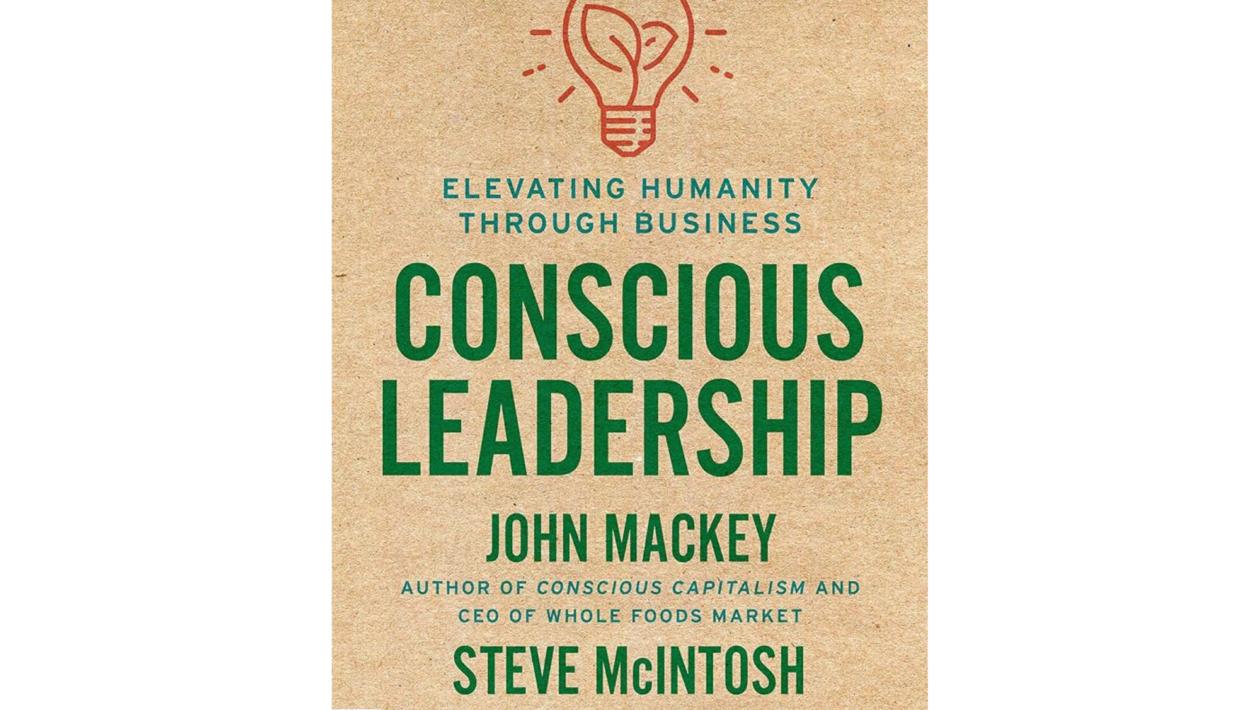By John Mackey, Steve McIntosh, & Carter Phipps
Portfolio (2020)
eBook
Reviewed by DORCAS ADEGA
Conscious Leadership is a sequel to Conscious Capitalism, and both books were written to move business leaders beyond their focus on a single bottom line of making profits to a triple bottom line that also includes improving social and environmental metrics (loc. 59). Conscious Capitalism was birthed from an introspective journey by the CEO of Whole Foods, John Mackey, during a leadership crisis in which he was almost kicked out of the company he co-founded. This experience awakened in Mackey the need for better leadership in what Mackey calls the “characteristics and behaviors that unite those leaders whom we recognize as striving to be more conscious” (loc. 8).
Mackey, McIntosh, and Phipps overcome the lack of empirical research on conscious leadership with numerous real-life examples of the triple benefits, including profits and a more win-win mindset in business. They explore a myriad of characteristics, including love, humility, innovation for others, and even spirituality in building a case for conscious leadership. In a bid to elevate humanity through business, they mention the role of servant leadership as the vehicle for love in the corporate world and list many successful enterprises that have benefited from this leadership style.
The authors show the utility of transformational leadership that seeks to lift up all stakeholders, including followers, within a continuous learning environment. Team leadership is also emphasized for a conscious leader. These leadership styles together create a framework that, through the examples of various enterprises cited, have shown great benefit to both primary (immediate) and secondary stakeholders.
The many characteristics incorporated in the description of conscious leadership makes it difficult to identify causality and to determine what particular characteristics are actually useful. Mackey, McIntosh, and Phipps even mention self-care for the leaders to ensure productivity and maximum creativity. Although they do not have research to back up all the components they place in the conscious leadership approach, they cite evidence on the benefits of the behaviors listed independently.
From their own experience and that of others, Mackey, McIntosh, and Phipps provide handy “toolkits” to help readers apply what they have learned in a bid to make it easier to adopt. In this way, they attempt to overcome the weaknesses of the book’s narrative with handy steps to take, making it slightly prescriptive in order to help actualize what they refer to as “the heart of conscious capitalism,” which is to radically refute the negative perception of business and reject the split between purpose and profit (loc. 19).
For many Christians, the list of behaviors and characteristics in the book for conscious leadership will mirror many presented in the Bible. In this regard, the Christian reader will gain deep insights from this book on how virtues such as love and humility can work toward not only enhancing their lives but also increasing productivity, services, and even profits. I highly recommended this book, not only for the sake of our religious organizations and communities but also for the betterment of the economy.
Dorcas Adega, having an MBChB and master’s in global health, is the co-founder of a medical missionary movement and serves as health director of the Got Jope Seventh-day Adventist Church district, as a health committee member of the New Southwest Nyanza field of the Seventh-day Adventist Church in Tanzania, and as women ministries director of the Got K’Ayayo Seventh-day Adventist Church.

